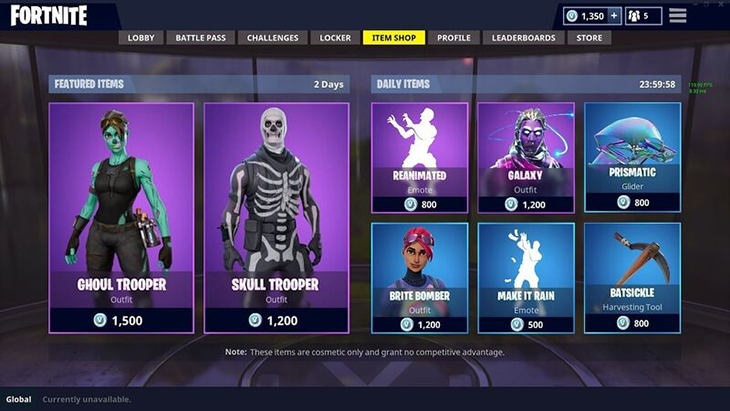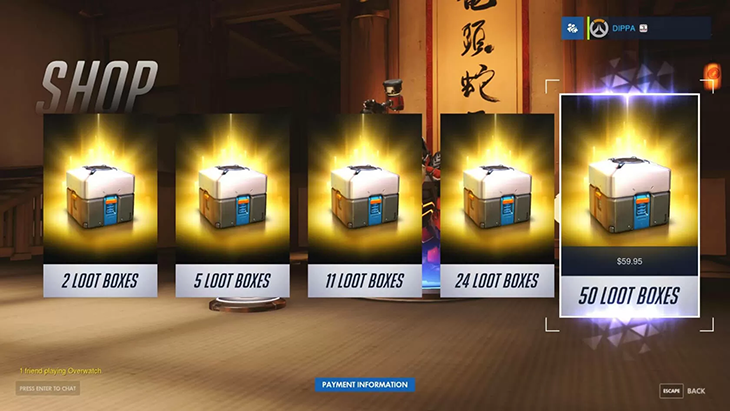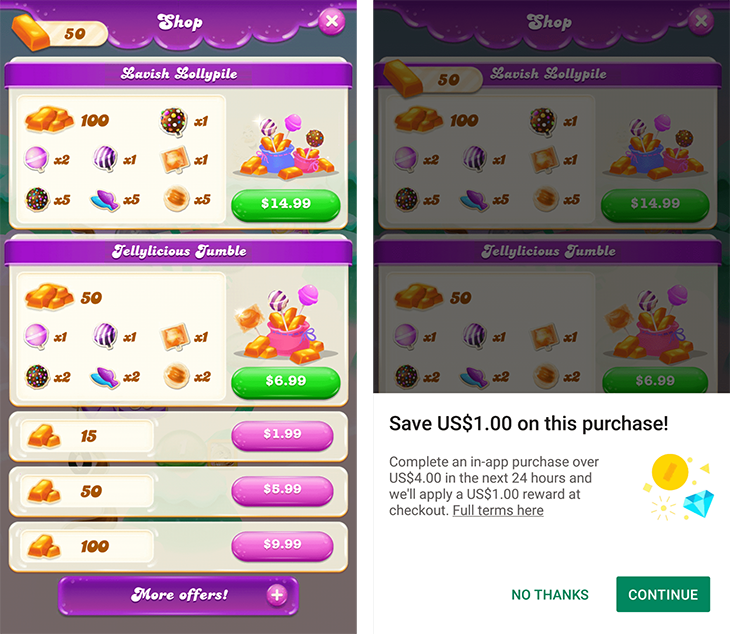I always tell my product management students that one of the keys to a successful product is convenience. Usually, by this, I mean creating a product that solves a particular problem in a way that creates a business opportunity for a company. However, it is much more than that.

Convenience can also be a great user experience — the user can pick up your product and use it to its full extent without training or confusion. Convenience doesn’t only apply to users, but also to the ability to boost sales generated by your product. Couple that with perhaps the oldest saying in the sales playbook — “It’s always easier to upsell than to get a new client” — and you get in-app purchases.
In-app purchases are an online shop within your product where a user can purchase additional features, such as additional courses in an educational app or a more flashy weapon in a video game. They add to the regular free features to give the user additional value or leverage in the app.
An estimated 50 percent of non-game and 79 percent of game apps use in-app purchases. Nowadays, in-app purchases account for 48.2 percent of mobile app earnings as compared to 14 percent from ads-based revenue and 37.8 percent from paid app downloads
If we look at how software was monetized until around the early 2000s, the model was simple. You had a version of your PC game, or any app for that matter, and you got exactly what was advertised on the cover. The game you downloaded had a fixed number of levels, and you knew exactly what features your Photoshop app would have when installed:

Every year, an updated version of it would pop up with new features and new optimizations. However, much like with the car business, it was hard to upsell a client with a new version year after year. Simply put, the old version was still so good after a year that it made no sense to buy a newer one.
In those early days of the world wide web, digital product upsells came in the form of add-ons or expansion packs — packages of additional assets, functionalities, or game levels you could buy for your product. The only issue in making mass profits from those was the logistics. To buy your add-ons, you would have to still go to the physical shop and purchase the expansion pack on medium storing them, just like with the original product. It wasn’t convenient at all.
Everything changed in the early 2000s when broad and fast internet access, combined with the ease of online payments, approached a point where one could consider creating smaller, easily accessible add-ons. Thus, the era of online, in-app, purchases was born.
This ability to buy small game changes or perks first appeared in Korea with Nexon’s online free-to-play games, starting with QuizQuiz and followed by games such as MapleStory (2003), Mabinogi (2004), and Dungeon Fighter Online (2004).
For me, the case of the mass adoption of in-app purchases started with an online game called League of Legends. This free game collects 10 players in five-on-five matches of heroes with unique abilities, all united to destroy the opponents’ base. It looks amazing and offers an incredible experience:

The way League of Legends is getting profit is through in-app purchases of additional heroes to play and “skins” to change their appearance. Those “skins” make your hero look more unique and build social status (“I could afford this very expensive look for my hero”), but do not impact the skill-based gameplay at all. You could say this is extremely inclusive: you have access to the game for free and you only pay if you want to thank the developers or if you desire and can afford a particular hero’s skin.
However, the true era of in-app purchases started in 2007 with the release of the first iPhone. It’s the smartphone app shops and the ability to upsell a user almost anytime that made those spending opportunities what they are today. Only when smartphones emerged could clients ongoingly spend money on a product they already own.
Let me highlight a few examples of how modern games/apps monetize their services along with a few examples:
In this model, you simply buy lifetime access to games and software, though it doesn’t mean that they won’t come with an in-game shop.
An example of this would be an upcoming Diablo IV game, where you need to buy a $70 license to access the epic adventure. However, you still get to buy skins for your characters. Granted, this is an app “purchase,” not an “in-app” one, but in this case, you often have to first buy the shop (the app) access itself before you will be able to buy anything in it.
In this model, rather than buying access to the shop, you have it for free. However, other than a demo or very limited content, there is little free stuff there. Instead, you have to buy specific content you might need.
An example here would be the education app Udemy, where you can buy courses and learn new skills:

I’ve mentioned old ways of buying Photoshop, where you’d get a license for a specific version of the app. Nowadays, you can’t buy it like this. Instead, it evolved into a service. You always get access to the newest version of Photoshop with all the features, but you need to pay monthly to use it.
Of course, you get a discount if you pay a year in advance and it also comes with additional apps (that you likely don’t need). This way, users always pay for the up-to-date version of the app if they want to use it at all.
Granted, this didn’t start with Photoshop and dates back to multiple online games that were subscription based (like World of Warcraft). However, I also want to point out a different version of a subscription below:

These are typical for video games. A battle pass is a set of rewards that gamers earn while they play the game. The trick here is that those passes usually have two tracks: free and paid. Thus, as you earn rewards and visit the screen with the free pass to pick those rewards, you see all the other benefits you could be getting if you paid. They usually last a month before they are reset with new rewards and a new paid track to buy:

As mentioned above, popularized with League of Legends, you find direct cosmetic purchases in more and more games where you don’t even expect it. Naturally, it’s a way to easily monetize any product, as creating assets is not as expensive and has a huge expected return on investment.
The battle pass and in-game skin purchases are what got the hit game Fortnite to its current heights:

This is a form of in-app purchase, mostly seen in video games, where rather than buying a specific item or character, you buy a randomized set of those containing items of different rarities. Thus, you basically gamble your way into trying to get the rare skin/card/item/collectible you need to progress through. They emulate the experience of growing your collectible card collection purchased via randomized packs:

Paying to gain an advantage is a very common tactic for games and competitive apps. This ranges from the ability to simply continue to play the game (as you are only available to play a limited number of times throughout the day unless you pay), save time (like instantly buy a building that would normally take 20 hours to build), or straight up buy power by improving its strength with real-life money. The hit game CandyCrush does a great job of this:

Another example of this in practice is DuoLingo. This language-learning app is a non-video-game-related example where, in the free version of DuoLingo, you only have five hearts at a time. For each mistake you make, you lose a heart. Once you run out of your five hearts, you can spend your in-app currency to get more or do more lessons to gain them back. However, you can also subscribe to Super DuoLingo, which gives you unlimited hearts and therefore unlimited chances. This is extremely advantageous for competing in their in-app tournaments and for completing challenges.
Now that we know the types of in-app purchases, let’s look at the benefits and risks associated with this phenomenon.
As mentioned in the intro, the convenience of easily upselling a user is something that can boost the sales of any product significantly. From the product manager’s perspective, this is almost a dream situation: if the technical function of the app is strong, the whole work may revolve around creating in-app shop items that represent a small development effort and come with a low risk of not earning a significant amount of money.
All you need is to have a product that offers great value to the user (say, a fitness app collecting programs you can do with your kids or a game with exceptionally good gameplay) and make sure that it has a shop that offers items that improve the experience.
Another way to ensure business for your product is to have it subscription based. This way, a client becomes enrolled in your service and you have a long-term commitment from them, making it easier to plan your product’s development. Rather than chase new clients to sustain the product and the company, you need to make sure that users who use the product love it and will be eager to commit to another 12 months of payments every year.
Adobe, the owner of Photoshop, changed from a lifetime license model to a subscription one — leading to them having a record annual revenue of $15.79 billion in the fiscal year 2021.
Thus, from a product manager’s perspective, adding in-app purchases to their product is a go-to decision. While the shop and items present in it can be implemented in a user-friendly way that makes sense for both ends, the truth is we live in a world of maximizing profits, often at any cost. Thus, this leads to some truly worrying sales patterns.
Users are people and people can be manipulated into making an unwanted purchase. This can happen with a choice of certain colors or prey on their most basic human. One of those is the desire to collect and have a full collection. This is why loot boxes are so successful and at the same time, so dangerous. While most people will avoid the temptation, it only gets a few users with deep pockets or bad spending habits to get a game creator really rich. Loot boxes are already under as much supervision as casinos in some countries.
Remember the subscription model? Yes, you pay on an ongoing basis, but at least you always get all the newest features, right? Yes, but what if you don’t need them? Or the subscription covers additional products you won’t use that increase the price? You often realize you are paying more per year than you would have paid for a fixed version of the one app you need.
I’m certain that the users hardly utilize all the apps that are a part of the Office365 subscription. In fact, just a few days ago, Microsoft Teams stopped being a mandatory part of the package so that the Redmont giant to avoid antitrust proceedings.
But it’s not only about the existence of loot boxes or bloated subscriptions, it’s also about borderline predatory sales tactics connected to them. For example, companies won’t allow you to buy items or perks for your currency directly. Instead, you will need to buy specific in-game virtual currency (say, “magical crystals”) that can be used to buy the item you want. This is intentionally confusing!
Studies have shown that we are more likely to spend virtual currency rather than real dollars. On top of that, you are never able to buy as much virtual currency as you need. Instead, you have to purchase them in bundles that are worth, say, 1.4 of a premium character skin. This way, when you buy the skin you wanted, you are still left with 0.4 worth of in-game currency to tempt you to buy another bundle so that the remaining 0.4 doesn’t go to waste.
Another shady tactic used is to offer a user an item or bundle that gives really meaningful gain for an absurdly low price. Why? Studies have shown that a user that made even a single purchase is likely to follow it up with future ones. Thus, the underpriced offer is there only to break the glass ceiling of “I will never buy a skin for boots for a character in an online game” and convert a free user into a regularly paying one.
Oh, did I mention free rewards that you get daily, but have to visit the paid shop to pick them up? This way you get to see that underpriced “bait” bundle every day! It’s a crime not to benefit from such a discount, right? Well, I can say that, if nothing else, setting such traps should be a crime for certain!
And those are only selected morally-corrupt sales tactics that plague the world of modern in-app purchases.
Let’s face it — IT companies struck a goldmine with convenient in-app sales. If you are a product manager that needs an additional revenue source for your product, adding an in-app shop is a no-brainer. Unfortunately, this also came with gold-rush-fever, and rather than responsibly profit from easy-to-create virtual goods, companies try to maximize the income from these sources with rather shady tactics.
There is only one way for a consumer to fight these: be aware of those strategies and actively avoid traps set for the consumer. I don’t think I can tell you to ignore apps with such purchase options altogether — that would mean you will never try the best and most entertaining apps out there. However, knowing what was built in there to actively incentivize you to spend your hard-earned money will likely prevent you from falling into those schemes.
Who knows? If enough people know what is happening and show their lack of support with their wallets, perhaps things will turn out for the better. The European Union is currently investigating loot boxes as potential gambling, and many other countries already deemed them to be exactly that, thus blocking all or underaged players from using such apps.
In the meantime, thank you for reading and I wish you for all the purchases were worthwhile and informed.
Featured image source: IconScout

LogRocket identifies friction points in the user experience so you can make informed decisions about product and design changes that must happen to hit your goals.
With LogRocket, you can understand the scope of the issues affecting your product and prioritize the changes that need to be made. LogRocket simplifies workflows by allowing Engineering, Product, UX, and Design teams to work from the same data as you, eliminating any confusion about what needs to be done.
Get your teams on the same page — try LogRocket today.

A practical framework for PMs to use AI in ideation without sacrificing judgment, strategy, or decision quality.

A practical five minute revenue estimation method to help product managers compare ideas, drop low impact features, and prioritize smarter.

A practical guide for PMs who want to stop being bottlenecks, delegate smarter, and lead teams effectively with a clear ownership framework.

Stop letting unreliable data block features. Treat data as inventory to track quality, ownership, and ship with confidence.